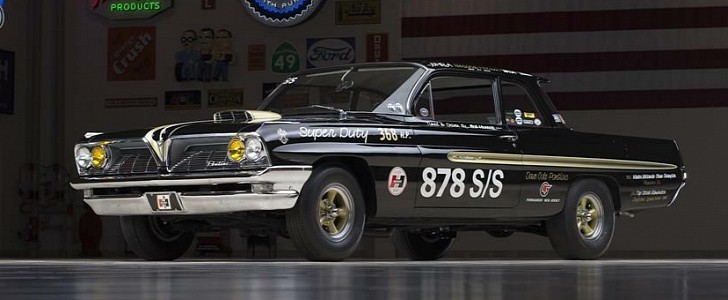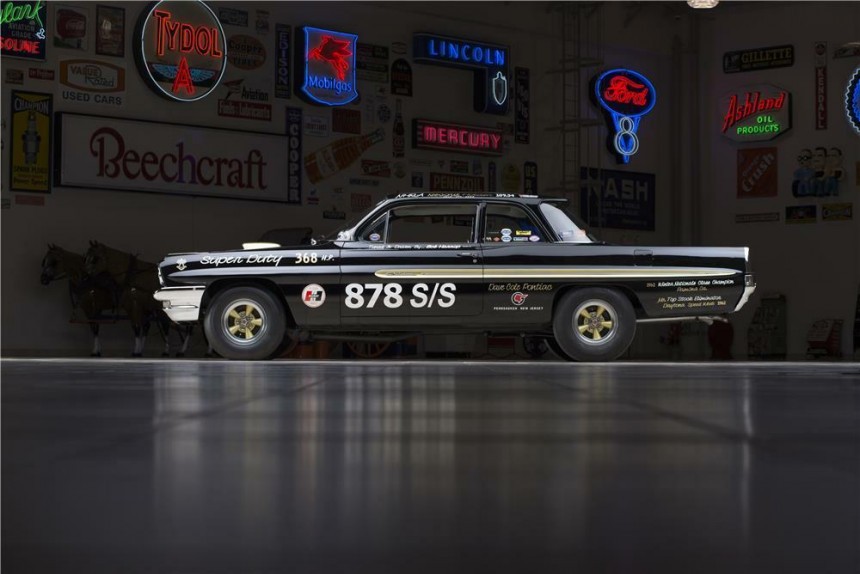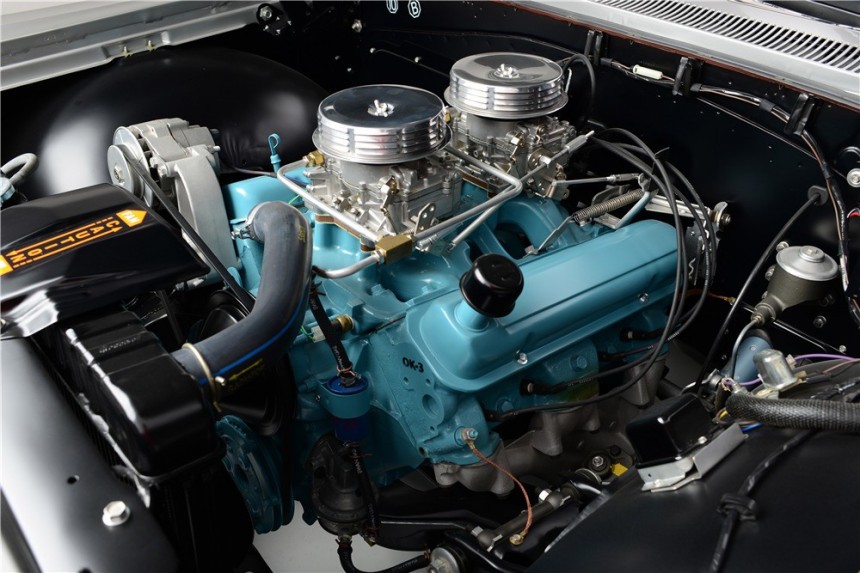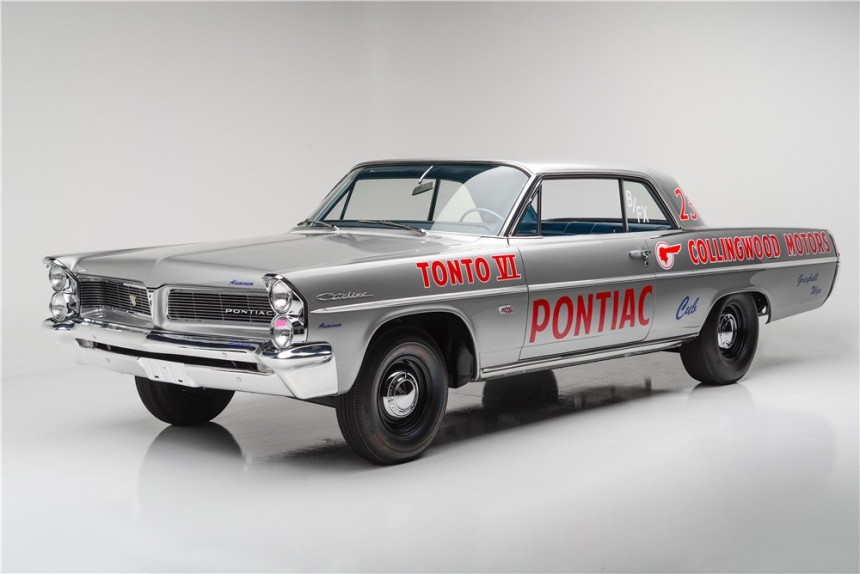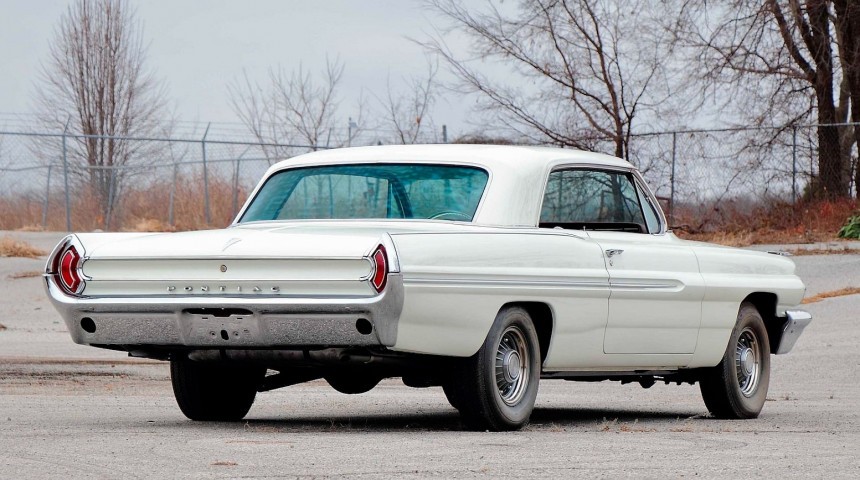The Pontiac GTO is often considered America's first muscle car, but the concept can be traced back to 1949 when Oldsmobile introduced the V8-powered Rocket 88. Ask around and you'll also get answers like the 1955 Chrysler C-300, 1956 Studebaker Golden Hawk, and 1957 Rambler Rebel.
None of them are wrong, as all these cars had major contributions to the early muscle car, but what I do know for a fact is that the GTO wasn't Pontiac's first beefed-up vehicle. It all started with the Catalina 421 Super Duty.
While all GM brands were banned from racing following the 1957 AMA gentleman's agreement, Pontiac quietly developed a race-spec upgrade for its 389-cubic-inch (6.4-liter) V8 in 1959.
Offered as an over-the-counter upgrade for 1960, it helped Pontiac win seven NASCAR races and enabled Jim Wangers to clinch the NHRA National Championship in a beefed-up Ventura.
In 1961, Pontiac revised the package and its cars won 30 of 52 NASCAR races. While also dominating quarter-mile races across the U.S.
With the company working on a larger, 421-cubic-inch (6.9-liter) Super Duty engine, NHRA officials revised the rule book to prevent it from finding its way in stock classes.
But the fact that components were required to have factory part numbers and had to be factory-installed didn't prevent Pontiac from racing in 1962. The company simply dropped the 421 in regular-production Catalina full-size cars.
The mill used a four-bolt, 3.25-inch main block, a 4.09-inch bore, and forged-steel crank and rods, as well as forged-aluminum pistons. A pair of four-barrel carburetors sat atop an aluminum intake for an official output rating of 405 horsepower. In reality, the 421 was actually good for around 465 horses.
But as powerful as it was, the 421 Super Duty engine was also excruciatingly expensive. The optional mill came in at a whopping $2,250 in 1962, which was almost as much as a base Catalina, listed at $2,725. Not surprisingly, Pontiac didn't sell too many of them.
There aren't any official records to run by, but it seems Pontiac put together around 240 of these Super Duty engines. Only 177 of them found their way into Catalina Super Duty models.
Other sources claim that only 130 were actually fitted with the 421. But the sticker wasn't the only thing that kept the 421 V8 a low-production unit.
In early 1963, General Motors ordered both Pontiac and Chevrolet to put an end to their factory-supported racing efforts. By the time it happened, the company had only offered a few 421 to racing teams, mostly in lightweight versions of the Catalina Super Duty.
These cars are known as the "Swiss Cheese" Catalinas, due to having about 130 holes in their frames for weight-saving purposes. These rare Super Dutys also featured aluminum front fenders, hoods, and bumpers, as well as a front sway bar delete.
Pontiac also eliminated non-essential equipment, such as sound-deadening material and body sealers. These special cars weren't sold but rather given to key drag racing teams instead.
When properly manhandled down the quarter-mile, the Catalina Super Duty stopped the clock at around the 13.5-second mark, to go with a trap speed of around 107 mph (172 kph).
The lightweight "Swiss Cheese" cars were obviously quicker, covering the distance in the low 12-second bracket, at more than 115 mph (185 kph).
The 421 Super Duty engine also found its way in other Pontiac models, in far more limited numbers. For instance, a dozen Grand Prix cars were fitted with the race-spec V8 late in the 1962 model year.
Having found out of the impending GM ban on factory racing, Pontiac engineers also assembled a few Tempest compacts with the Super Duty mill over Christmas 1962. Six coupes were built to compete in the NHRA Factory Experimental class, but Pontiac also dropped the 421 in six station wagon models. It's believed that only one of each still exists, but that's a story for another time.
Fast forward to 2021 and Catalinas equipped with the 421 Super Duty package are among the rarest and most desirable Pontiacs out there. They're quite expensive too, with both regular and "Swiss Cheese" cars valued at almost $500,000. This figure places the Catalina Super Duty alongside the Chevrolet Impala Z11, yet another GM-built dragster that was sold as a street-legal car in the early 1960s.
While all GM brands were banned from racing following the 1957 AMA gentleman's agreement, Pontiac quietly developed a race-spec upgrade for its 389-cubic-inch (6.4-liter) V8 in 1959.
Offered as an over-the-counter upgrade for 1960, it helped Pontiac win seven NASCAR races and enabled Jim Wangers to clinch the NHRA National Championship in a beefed-up Ventura.
With the company working on a larger, 421-cubic-inch (6.9-liter) Super Duty engine, NHRA officials revised the rule book to prevent it from finding its way in stock classes.
But the fact that components were required to have factory part numbers and had to be factory-installed didn't prevent Pontiac from racing in 1962. The company simply dropped the 421 in regular-production Catalina full-size cars.
The mill used a four-bolt, 3.25-inch main block, a 4.09-inch bore, and forged-steel crank and rods, as well as forged-aluminum pistons. A pair of four-barrel carburetors sat atop an aluminum intake for an official output rating of 405 horsepower. In reality, the 421 was actually good for around 465 horses.
There aren't any official records to run by, but it seems Pontiac put together around 240 of these Super Duty engines. Only 177 of them found their way into Catalina Super Duty models.
Other sources claim that only 130 were actually fitted with the 421. But the sticker wasn't the only thing that kept the 421 V8 a low-production unit.
In early 1963, General Motors ordered both Pontiac and Chevrolet to put an end to their factory-supported racing efforts. By the time it happened, the company had only offered a few 421 to racing teams, mostly in lightweight versions of the Catalina Super Duty.
Pontiac also eliminated non-essential equipment, such as sound-deadening material and body sealers. These special cars weren't sold but rather given to key drag racing teams instead.
When properly manhandled down the quarter-mile, the Catalina Super Duty stopped the clock at around the 13.5-second mark, to go with a trap speed of around 107 mph (172 kph).
The lightweight "Swiss Cheese" cars were obviously quicker, covering the distance in the low 12-second bracket, at more than 115 mph (185 kph).
Having found out of the impending GM ban on factory racing, Pontiac engineers also assembled a few Tempest compacts with the Super Duty mill over Christmas 1962. Six coupes were built to compete in the NHRA Factory Experimental class, but Pontiac also dropped the 421 in six station wagon models. It's believed that only one of each still exists, but that's a story for another time.
Fast forward to 2021 and Catalinas equipped with the 421 Super Duty package are among the rarest and most desirable Pontiacs out there. They're quite expensive too, with both regular and "Swiss Cheese" cars valued at almost $500,000. This figure places the Catalina Super Duty alongside the Chevrolet Impala Z11, yet another GM-built dragster that was sold as a street-legal car in the early 1960s.
